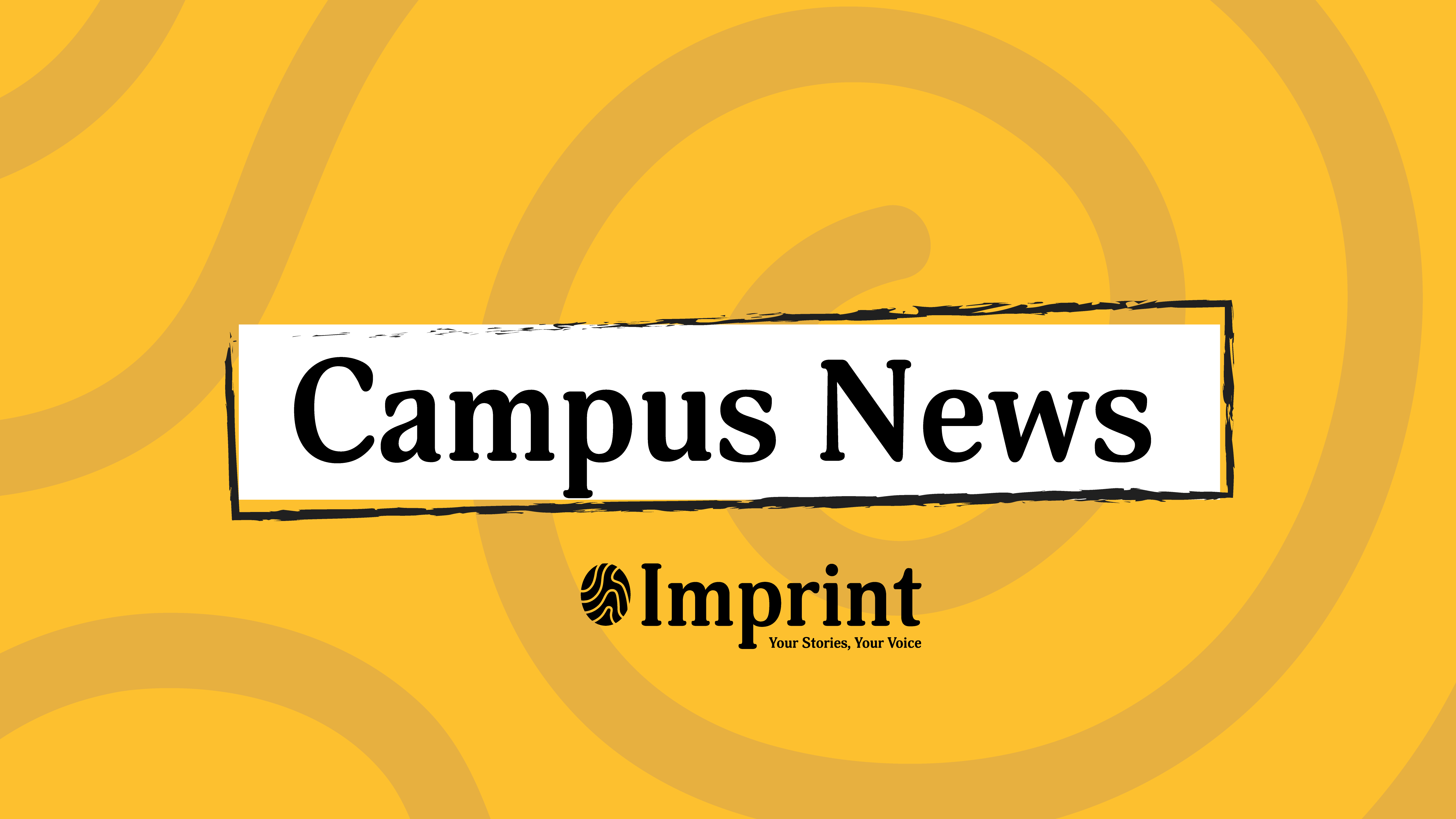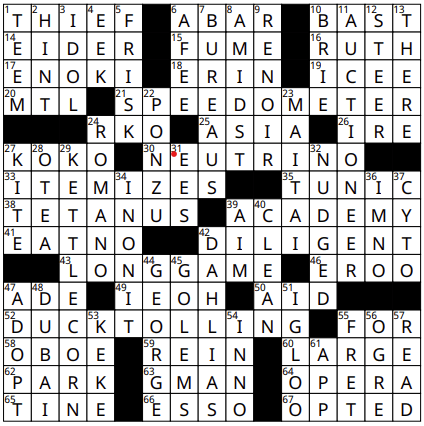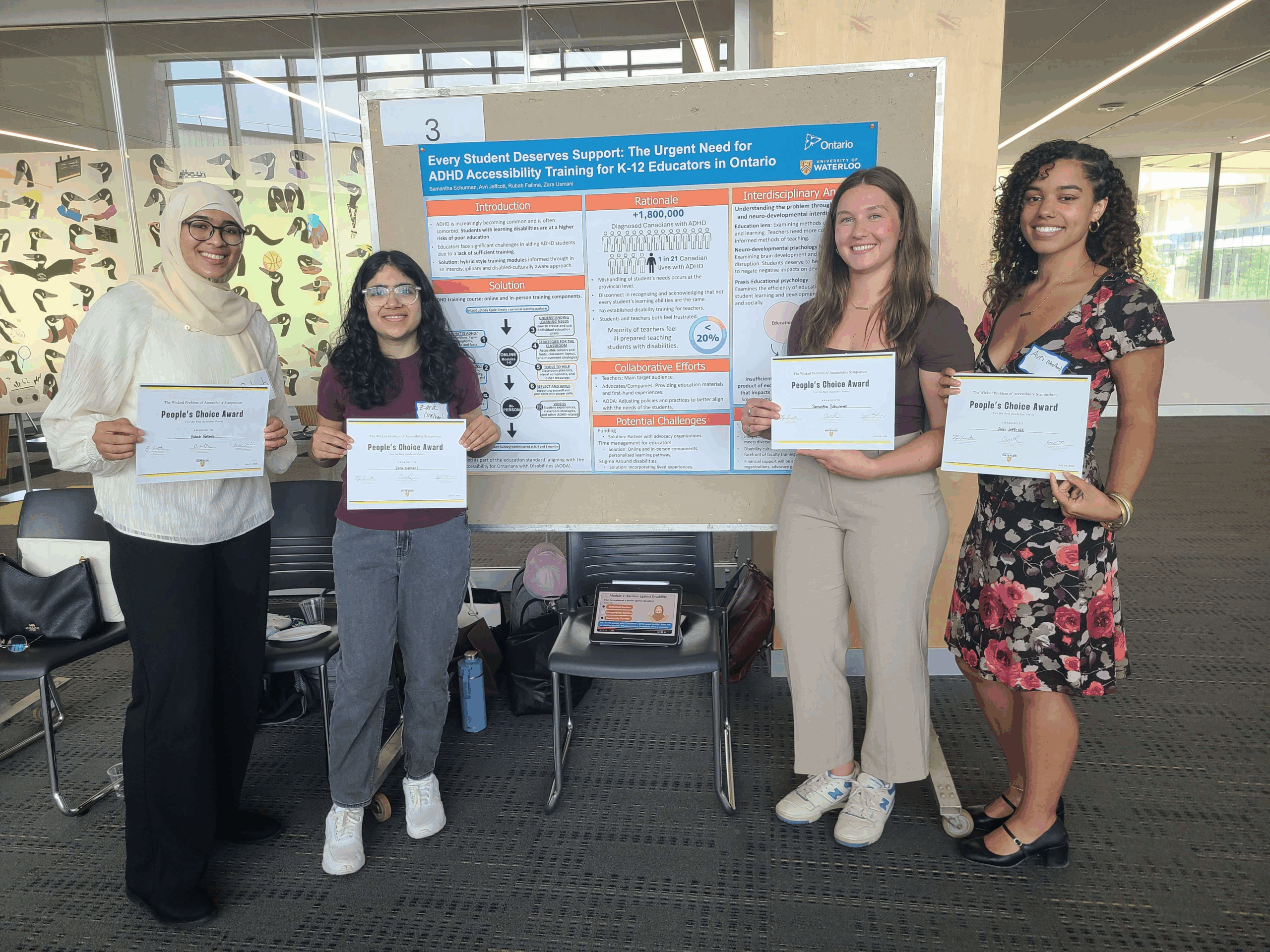
Four women stand smiling in front of a research poster about ADHD accessibility training at the Accessibility Symposium. Each proudly holds a “People’s Choice Award” certificate in the bright TII conference space.
Four women stand smiling in front of a research poster about ADHD accessibility training at the Accessibility Symposium. Each proudly holds a "People's Choice Award" certificate in the bright TII conference space.
Instructors, students and UW community members gathered in the Black and Gold room in SLC for the Wicked Problem of Accessibility Symposium on July 24, wrapping up the latest “Wicked Problems” course offering that tackles the complex issues facing those with accessibility needs.
As part of an initiative to advance educational design, the Teaching Innovation Incubator (TII) ran the “Wicked Problem of Accessibility” course this past spring, highlighting accessibility challenges in society today and covering impacts across healthcare, education, technology, and socioeconomic barriers.
This course is the latest entry in the Wicked Problems project, a series of courses that tackles aforementioned “wicked problems,” defined as complex issues affecting the world today that cannot be solved easily within a unilateral perspective or solution. These courses are jointly taught by PhD students from different disciplines, who collaborate to design a themed course, then teaching it the next term to upper-year undergraduate students.
“We [wanted to] take an innovative approach to this problem… because it’s a ‘wicked problem,’ we see just how chaotic it would be to design a course based off of it,” noted Giuseppe Femia, PhD student at UW’s English department. “From that, we get experience dealing with teaching somebody about a very complex topic, and the students get a vivid understanding of just how complex something that they might’ve taken for granted was previously.”
Femia and his two fellow instructors, Emma Littler from the health faculty and Ryan Tennant from the engineering faculty, worked together to design a curriculum providing a holistic view of accessibility across different areas of society. Topics covered in the course range from the portrayal of people with disabilities in media to how assistive technologies are perceived under the medical and social models of accessibility. Concepts that most people might not associate with accessibility are also covered — indoor air quality is discussed as a health accessibility issue, through how people are exposed to harmful compounds and infectious aerosols that can transmit illness or impact long-term health.
“The interdisciplinary nature of the course was a benefit as well as a challenge in terms of the three of us,” Littler stated. “We come from such drastically different faculties…So [when] choosing materials or how to put forth information, we have to think about that.” Theory-based rhetorical analyses of how individuals with accessibility needs are included or excluded, which falls under Femia’s purview, is very different from looking at applied solutions from Tennant’s engineering-based perspective. Those aspects are in turn very different from the approaches Littler is familiar with as a PhD student at UW’s School of Public Health Sciences.
In the end, the instructor team’s work paid off. At the poster Symposium on July 24, students presented their final projects, where each group investigated an accessibility-related issue, its interdisciplinary connections, and potential solutions for those facing access barriers on the given topic.
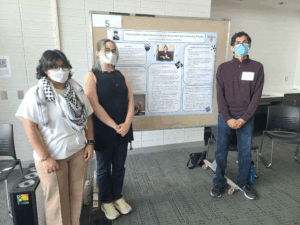
Left to right, Kashifa Ahmad, Anna Miller-Buza, Parth Bhatt. (Photo credit: Angela Li)
Parth Bhatt, fourth year kinesiology student, said the course’s interdisciplinary approach to accessibility made it memorable. “I’ve always viewed accessibility as more of a health issue that would require rehabilitation, because I’m in the faculty of health. That was my experience up until now, especially as I did my co-ops in clinics.”
Bhatt also expressed how this course reshaped his understanding of ableism in the health sector. ”The biggest thing that I’ve taken away… is the fact that accessibility is merely just being different in a different environment. What I’m going to take from this is to have the ability to consult with any patient and to help them adjust to an environment as opposed to being taught to simply say, ‘you’re broken; you need to be fixed; this is what normalcy [should] look like.’”
His teammates Kashifa Ahmad and Anna Miller-Buza investigated solutions to inaccessibility faced by deaf and hard-of-hearing people when dealing with law enforcement. Police officers often don’t have sufficient training on working with those requiring alternate forms of communication, and legal requirements for sign language interpreter availability are not always implemented. This often leads to misunderstandings, where individuals are unable to get the help they need, or in the worst cases, are at an elevated risk of being harmed in high-stake situations.
“We’ve seen folks being discriminated against at the hands of law enforcement… so tackling this issue we know will be interdisciplinary and intersectional, which is why we thought it was a very important topic to cover,” Ahmad said.
Ahmad is a social development studies student, who has lived experience facing accessibility barriers, hoping to carry the insights and knowledge from this course into her future career: “Helping disabled folks who navigate a world that isn’t meant for them and how those barriers can affect them [is] something I’ve always been very passionate about. So having this knowledge from a variety of different lived experiences can help inform me on how I can best support my clients, how I can be a better advocate for them, and how I can promote any sort of changes in the Social Work field.”
Most of the general public’s awareness around accessibility focuses on those who have physical disabilities, such as persons with visual or auditory impairments. However, neurodivergent individuals, such as those with ADHD, may also face significant access barriers. Insufficient resources and training mean that professionals often are unaware, unwilling or unprepared to support those with ADHD, especially in the classroom. Public health student Rubab Fatima and BSc psychology student Samantha Schurman, both third-year students, worked with their teammates to research ADHD accessibility training for K-12 educators. Fatima said the topic was chosen for its strong relevance to students: “Research shows that ADHD is one of the most common neurodivergence [types] within the education sector… our project looks at preventative measures in the sense that it’s tackling teachers, who have a direct effect on their students.”
Schurman originally took this course to fill an elective slot but came to feel its more personal impact. “I’ve discovered when doing a lot of research that I’m a lot more emotionally invested in this than I realized…I feel like a lot of people got pretty invested in what they were doing and enjoyed it. The way the course was divided allowed us to really understand the intersection of everything.” The two students and their teammates Avri Jeffcott and Zara Usmani won the People’s Choice award at the symposium for their project.
Due to the program reaching the end of its current funding, this term’s course is the last known run of the Wicked Problems project. While the future of this course and the Wicked Problems initiative is uncertain, the instructor team hopes that the success of this pilot course opens students’ and educators’ eyes and minds to break the boundaries imposed by traditional points of view. Littler notes that a course about accessibility should be accessible itself: “Some of the design elements of our course made it so that students hopefully felt that they were able to participate even if they couldn’t attend in person…I hope other courses will take those and implement them,” Course policy elements like flex days to extend deadlines, alternative deliverables for those unable to attend in-person, and a mix of asynchronous and synchronous material were put in place to keep students engaged while being flexible for those with access needs during the term.
“When you design for the minority, often the majority also benefits…I think that they see that emphasized a little bit more in accessibility than they did before,” Tennant reflected about the students. “Having the skill to see things from different lenses helps them see how different accessibility issues may manifest, whether that’s indoor air quality or something else. Solving those types of problems can help everyone.“
Femia also hopes this experience will drive forward real action in being inclusive of those with access needs: “I hope that [students] realize the importance of including members of the disability community in things that affect them. I feel like a lot of people who are good-intentioned will go about trying to make policies or environmental constructs without necessarily consulting the people that [they affect].” He also hopes that UW recruits more from the external community in order to grow as an institution in future equity and diversity initiatives.
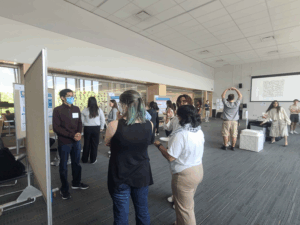
Instructors, students and UW community members gathered in the Black and Gold room in the SLC for the Wicked Problem of Accessibility Symposium on July 24.


